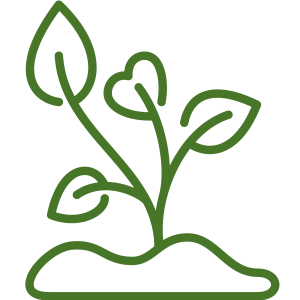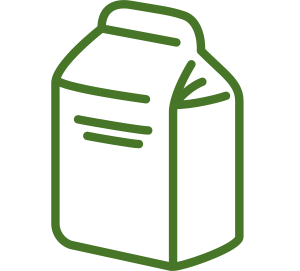 With the launch of the Big Soil Community Fera is taking a novel approach to overcome one of the biggest challenges to sustainable agriculture.
With the launch of the Big Soil Community Fera is taking a novel approach to overcome one of the biggest challenges to sustainable agriculture.
We are coordinating a nationwide community effort to sample and analyse the biodiversity of our soil – this will help to develop sustainable agriculture and improve soil health. By doing this at scale we’re able to provide you with a cost effective and detailed analysis of the biodiversity of your soil.
You’ll receive two reports. The first provides the results for your sample, giving a measure of the diversity of bacteria and fungi present, the top groups by relative abundance and key functional organisms.
![]() Click here to view a sample report
Click here to view a sample report
 The second report is the Big Soil Community Benchmark report which you can use in combination with your results to compare how your sample sits against the wider community picture. All data in the community benchmark report is anonymised and reported on a farm systems basis.
The second report is the Big Soil Community Benchmark report which you can use in combination with your results to compare how your sample sits against the wider community picture. All data in the community benchmark report is anonymised and reported on a farm systems basis.
For more information watch the following video or you can read the Frequently Asked Questions further down the page.
Frequently Asked Questions
 About Soil Health
About Soil Health
Why is soil health important?
Healthy soils contain a wide range of micro-organisms that:
• Help control plant diseases and pests.
• Form beneficial relationships with plant roots.
• Recycle nutrients.
• Improve soil structure to maintain water and nutrients.
• Ultimately improve crop production.
Soil conservation sustains plant and animal productivity and health and improves water
and air quality for current and future generations.
The government’s 25-year environment plan has given high importance to soil health
(read it here). An expected agricultural bill will likely set targets to restore soil health across the country by 2030, with possible incentives to improve soil management practices.
By joining the Big Soil Community, you can find out more about your soil health.
What is soil biodiversity?
Soil biodiversity refers to the variety of living organisms in soil, and the ecological
benefits they provide; this includes diversity within and between species, and the
different ways in which each contributes to soil health. Soils are an important
reservoir of biodiversity containing up to a third of all living organisms on the planet.
However, only around 1% of all soil micro-organisms have so far been identified.
Why are there so many undiscovered species?
Only a few of the micro-organisms present in soil can be grown in the laboratory
using traditional methods. However, new high-throughput sequencing technology
is helping to identify previously unknown micro-organisms from different soil types
and farming systems.
 Methods for Testing Your Soil
Methods for Testing Your Soil
Why use soil biodiversity as a measure?
Soil biodiversity can be lost by reductions in the abundance of beneficial micro-organisms. This can occur through:
• Poor land management (e.g. over-intensive production, loss of organic matter, overuse of
inorganic fertilizers and pesticides, compaction due to heavy machinery)
• Environmental issues (flooding, drought, erosion).
Biodiversity measurements can therefore indicate the general biological health of a soil.
What method is being used?
Fera is using a technique called ‘DNA metabarcoding analysis’ to assess the underlying microbial diversity found in agricultural and horticultural soils in the UK.
What is metabarcoding?
Metabarcoding is a technique to measure biodiversity by analysing DNA extracted
from soil micro-organisms. It uses a method known as ‘PCR’ to amplify DNA that is
specific to different groups of organisms – their ‘barcode’.
We measure the barcodes of bacteria and fungi in each soil sample using high-throughput DNA sequencing technology. This generates hundreds of thousands of DNA sequences that can be grouped together by those that share similar DNA sequences. Each group can then be compared to databases of reference specimens to produce a list of known and unknown micro-organisms in the original sample.
Is this a measure of soil health?
Soil biodiversity is not a direct measure of soil health, although rich and diverse microbial communities are thought to contribute to good soil health. Metabarcoding can be useful to measure the abundance of micro-organisms with desirable functions within and across different soils. It can also be used to detect undesirable organisms that cause plant diseases or accelerate the release of greenhouse gases.
 About your soil sample
About your soil sample
Will you supply a sampling kit?
A sampling kit and full instructions will be provided for each sample purchased.
How do I return the sample?
A pre-paid and addressed envelope will be provided for you to return your soil sample.
Why do you require information about the field the sample is taken from?
Your field information on location and crop management will be added to our database to allow us to continually improve our understanding of the results, and determine which microbes are present in healthy soil.
Is the sample representative?
It is very difficult to standardise how DNA is sampled and extracted from different
soil types. This is because:
• It is harder to extract DNA from certain micro-organisms.
• Micro-organisms can be found in different regions of the soil.
• Soils have different chemical and physical properties that affect extraction.
• A variety of different DNA extraction methods are available.
It is therefore necessary to collect and mix together soil samples from multiple
locations within the test area, prior to submission to Fera.
To maximise the chance of extracting DNA from all micro-organisms present in the sample, it is thoroughly mixed, and a sub-sample is homogenised in buffered suspension. Nevertheless, the micro-organisms present in the sample will only represent a snapshot
of the entire area under the environmental conditions at the time of sampling
(e.g. temperature, humidity, stage of cultivation, organic matter content).
 About your Soil Health Results
About your Soil Health Results
How will my data be used?
As well as your own sample we will collectively analyse all the samples we obtain,
to measure similarities and differences between different groups of soil. This will
allow us to link their microbial content with a wide range of features including:
• Geographical location of samples
• Their chemical characteristics
• The cropping systems used
The data from your own sample will contribute to this wider analysis, and each
individual report will provide specific information on your own soil, as well as
how it relates to the wider collection of data from the whole community.
What will my results look like?
You will receive a list of the top ten bacterial and fungal groups present in your sample
and their relative abundances. This indicates the biodiversity of your soil. You will
receive a score that shows how your sample compares to the whole community,
and information on how that score was measured.
How do I interpret my results?
The results show the proportion of each type of bacteria and fungi present in your sample, but not their absolute amounts. The relative abundance of each type of micro-organism is the essence of diversity. This provides an estimate of the different microbial communities present in your soil and their diversity across the site from which they were taken.
We report the diversity in your sample using a score called the ‘Shannon Index’. This score is lower when a small number of micro-organism types are highly abundant, and higher where a larger variety of microbes are more equally abundant. The scale may appear arbitrary, but in practice it means that your sample can be compared fairly against all other Big Soil Community samples. The diversity within a single sample is referred to as ‘alpha-diversity’, whereas differences between all the samples in the study is termed ‘beta-diversity’. Bear in mind that comparing your results with other independent studies can be problematic.
When will I get the results?
Reports will be sent in January 2019. The report will provide data on your soil sample and benchmarking data from all soil samples analysed.
Can I compare my results directly with other sources of information,
e.g. previously published studies of biodiversity in particular soil types?
To some extent, it is possible to compare your results with those from other studies – for example, comparing the most abundant micro-organisms in ‘normal’ soil that has the same properties as yours – but it is important to view these in context. The technical details of different tests can introduce biases for or against particular micro-organisms. A true direct comparison can only be made between samples obtained, stored, processed and analysed using the same methods.
As there are different accepted methods of measuring biodiversity it is important to ensure you are comparing like with like. Previous measurements, such as those using an out of date reference database, can also affect the results. We use rigorous methods and up to date references for our analysis of Big Soil Community samples.
 About your Payment
About your Payment
How much is it to join the community and submit a soil sample for testing?
We are looking to analyse a wide range of soil samples and the greater the number of samples the greater the understanding that can be developed between soil biodiversity and soil health. The price per sample will be a maximum of £250.00. However, as more farmers join the Big Soil community and more samples are tested so the cost per sample will decrease.
When should I pay the balance?
The balance will be due at the end of September. You will be advised of the amount outstanding by 30th September 2018.
How do i join?
